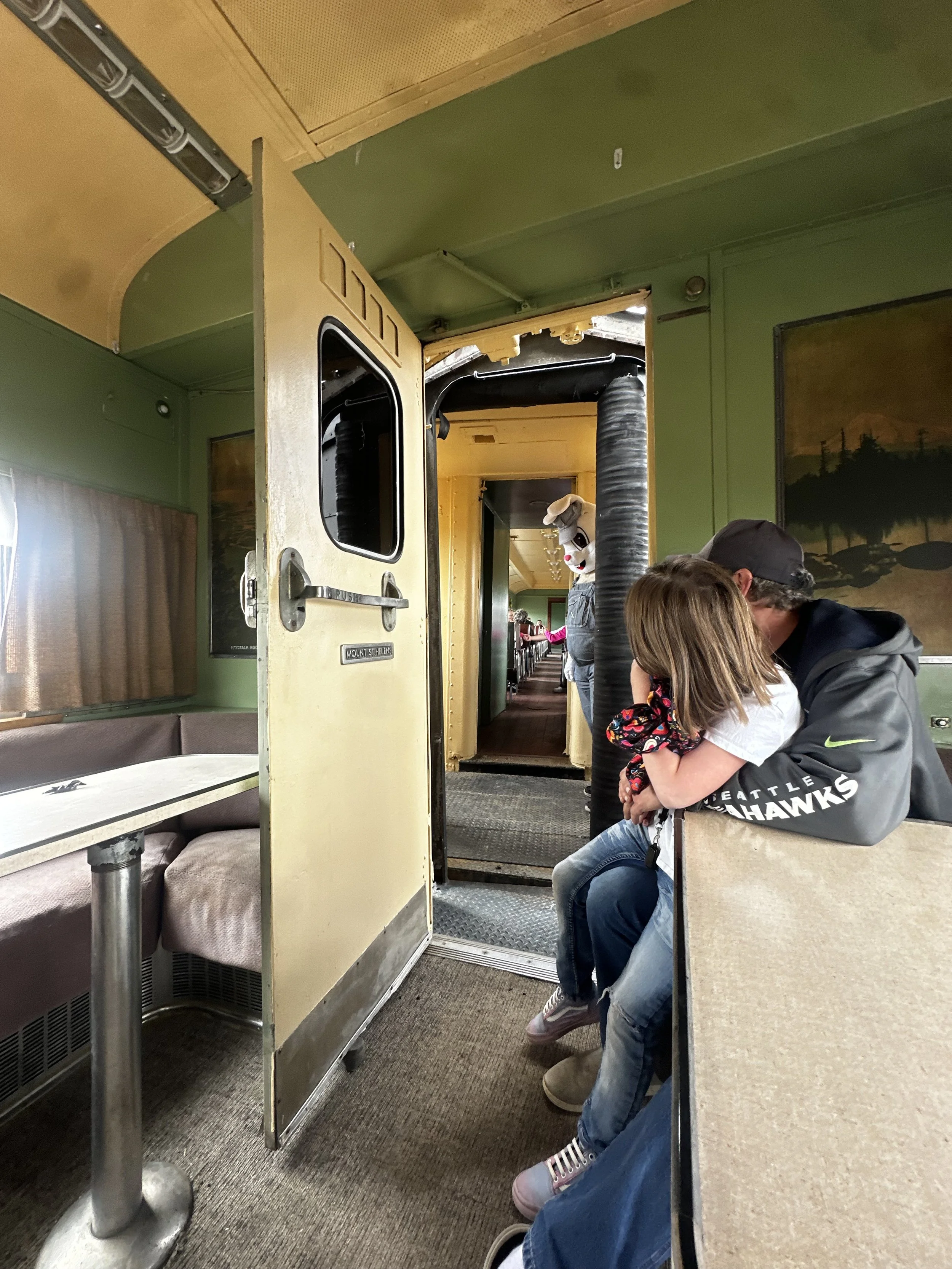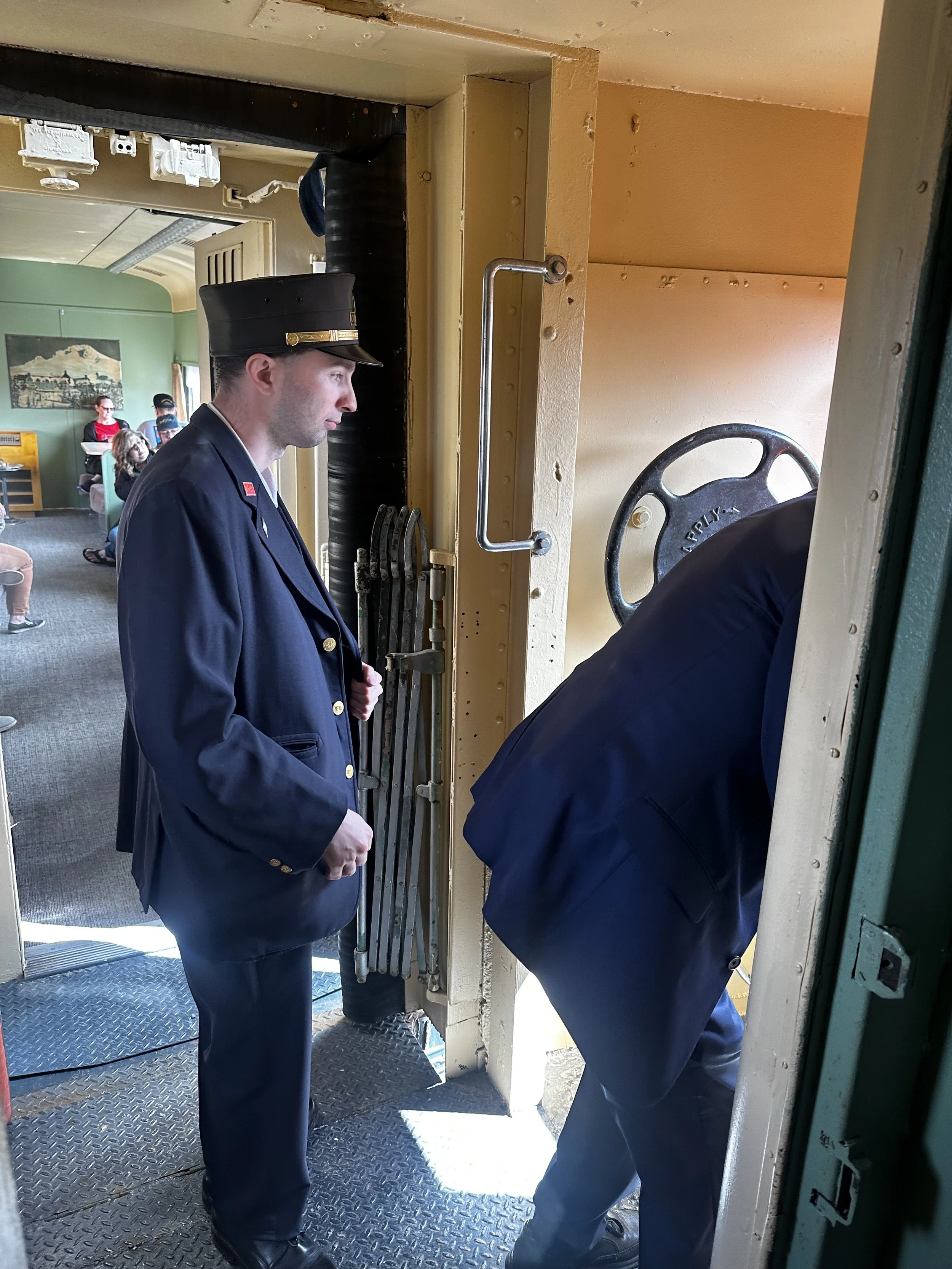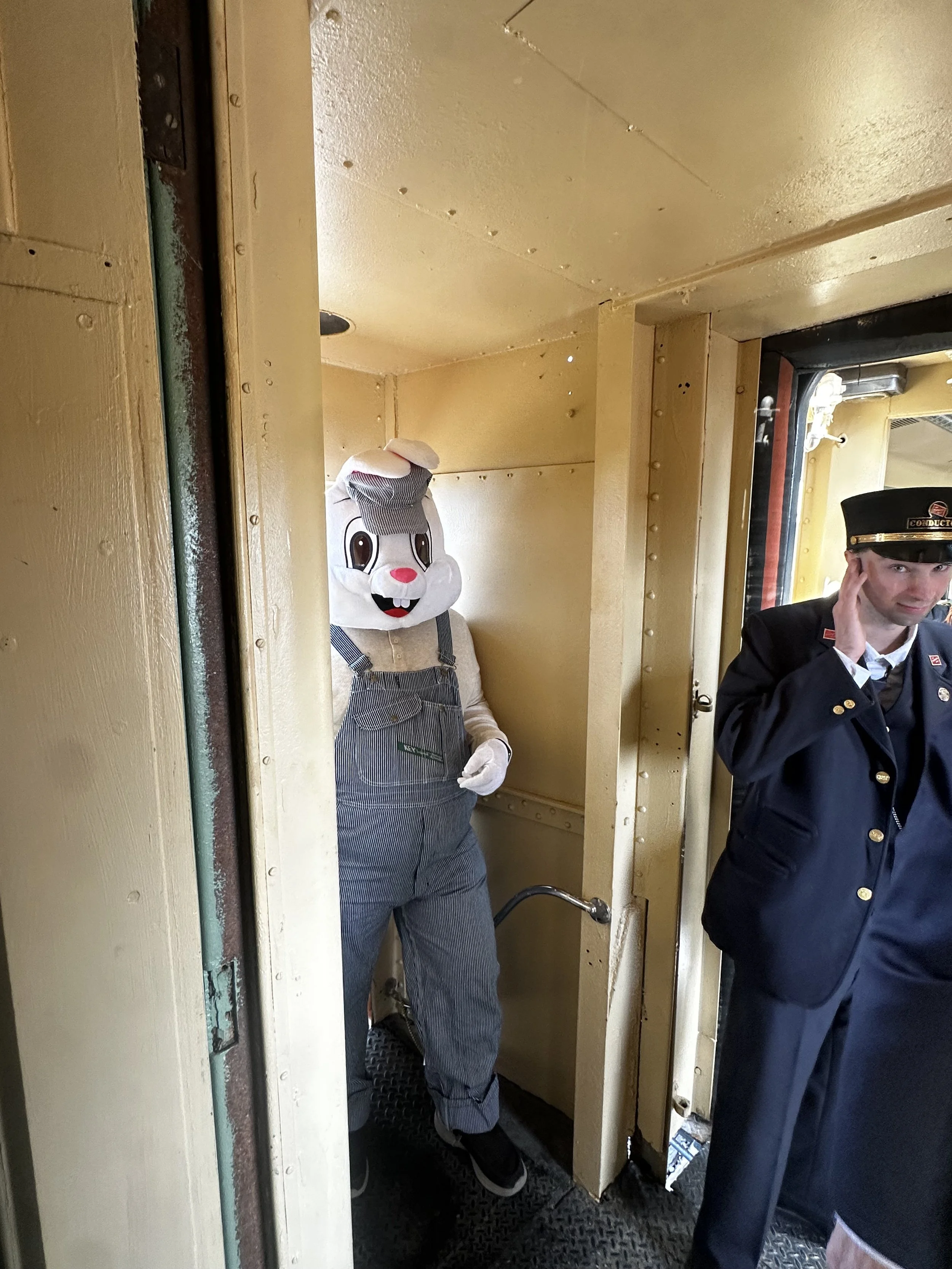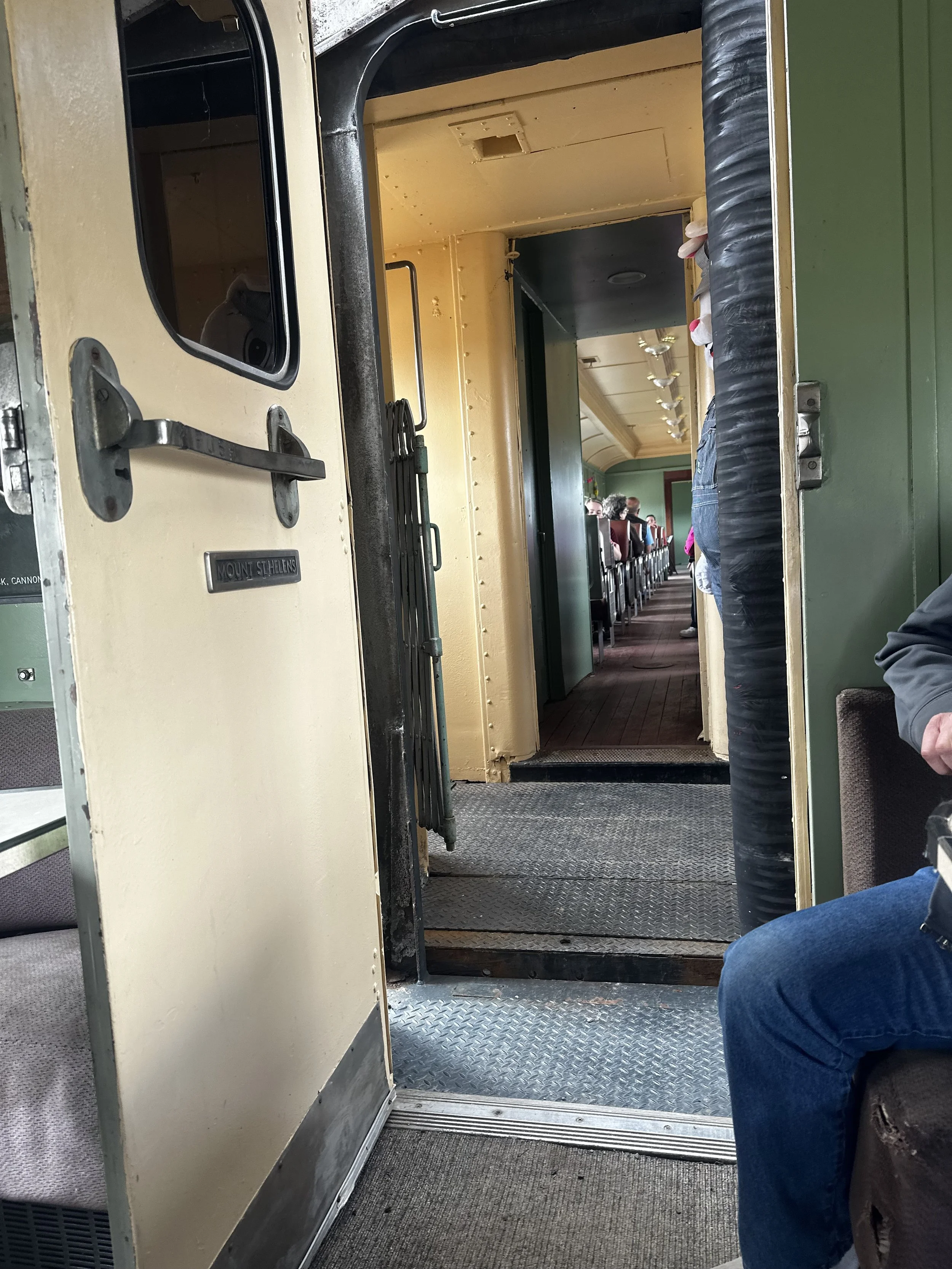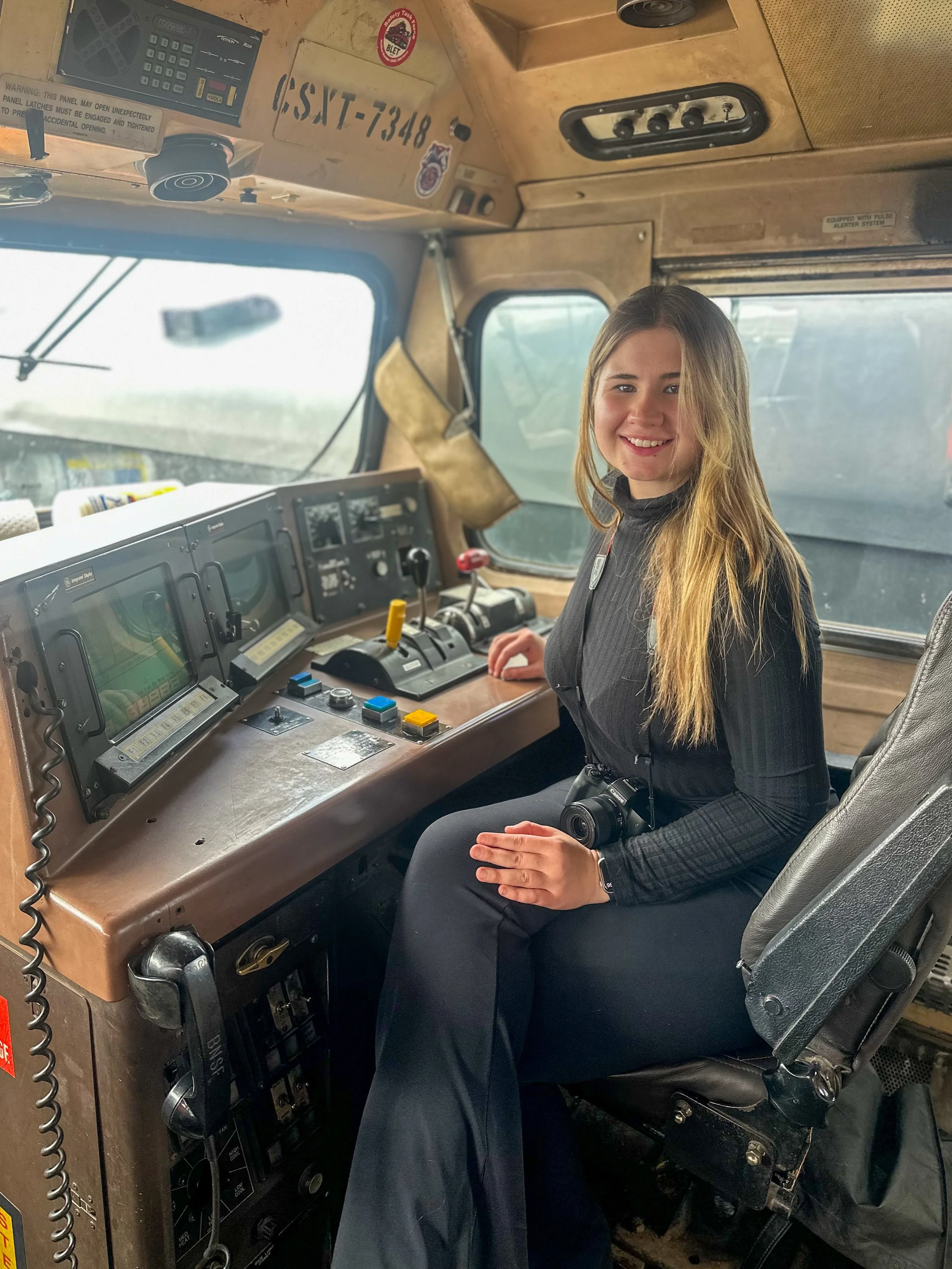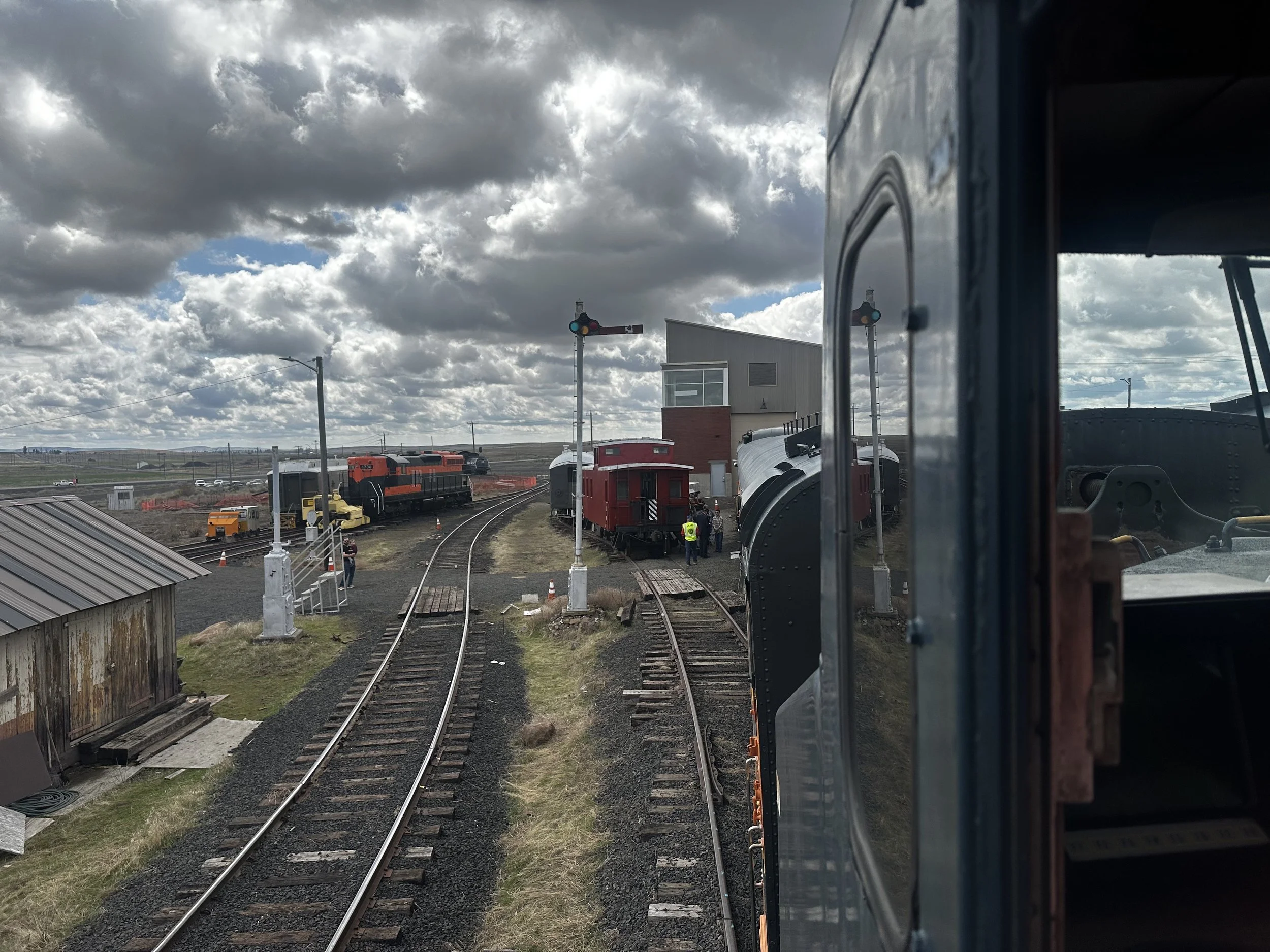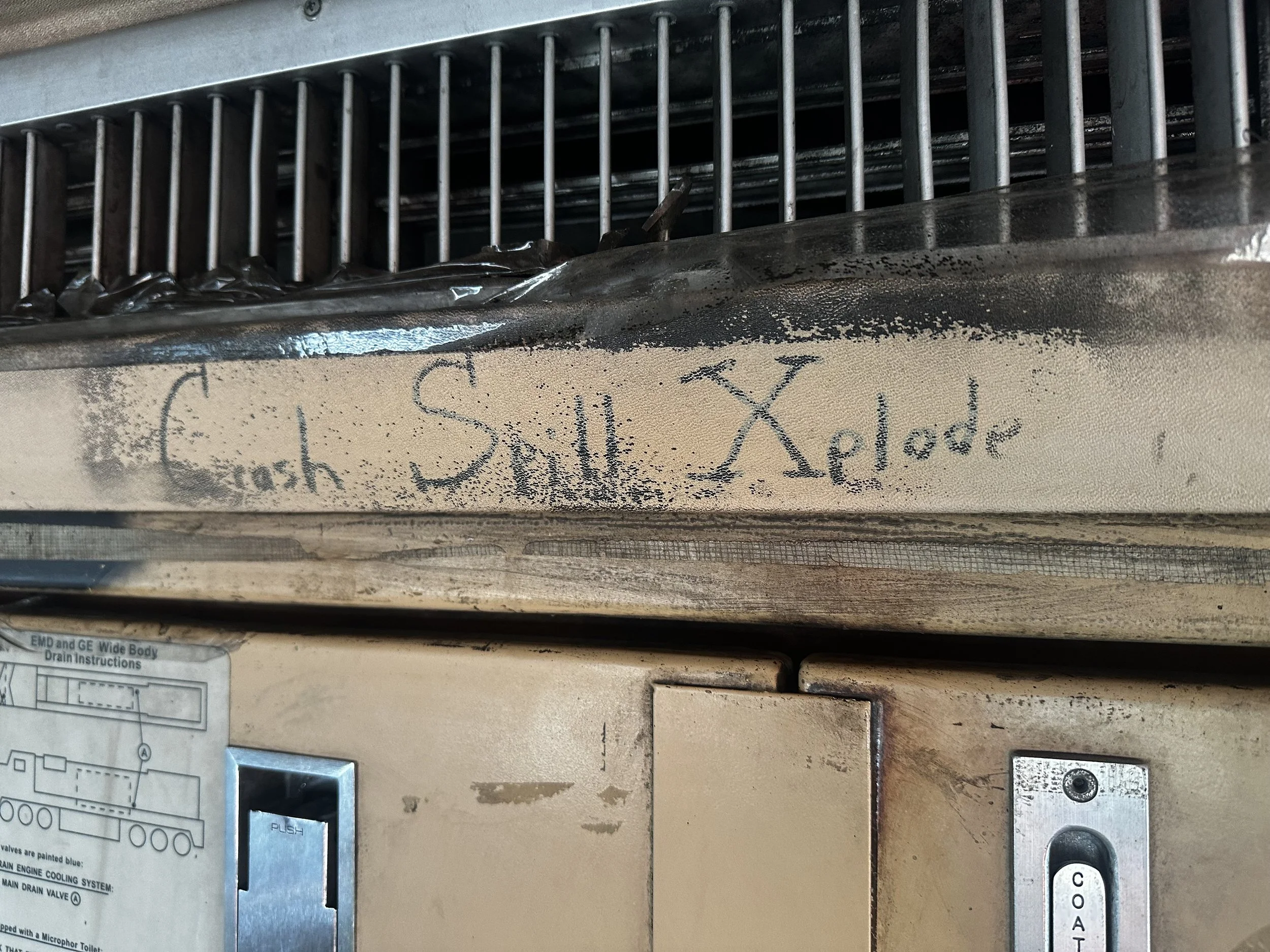Trains, rain boots and Brakeman Bunny
This Easter, instead of spending my weekend elbow-deep in deviled eggs or politely ignoring Peeps, I climbed aboard a 100-plus-year-old train and pretended I knew things about railroads.
I did not. But I learned fast.
It started at the Inland Northwest Rail Museum, where I figured I’d poke around a few vintage cars, take a photo or two, and head home feeling vaguely cultured. What I got instead was a deep dive into railroad history that included a private tour, an impromptu lesson in 20th-century train travel, and a cab ride in a diesel locomotive with a 30-year-old engine that ran smoother than my car.
My crash course began when I met Sean Rotinski, one of the museum’s historians. He’s the kind of person who doesn’t just know history — he sees it. Within minutes, he had me climbing the steep metal stairs of a passenger car built in 1916. Once inside, it was impossible not to imagine the people who had once traveled through it — soldiers, families, well-dressed women with matching hat-and-glove sets, all long gone but still present in the creak of the floorboards and the smell of aged upholstery and metal.
We walked through the dining car, and suddenly I could see myself in a shirtwaist dress and a sun bonnet, perched delicately at the counter with perfect posture, waiting with my gentleman companion for our coffee. It was unreasonably easy to imagine. One minute I was standing there in my lavender London Fog raincoat and slightly muddy boots, and the next I was fully immersed in some black-and-white travel film, exchanging pleasantries with strangers and pretending to read a telegram. The china on the tables, now tucked safely behind glass, looked like it had stories of its own — the kind of fragile elegance that says, “This is how people used to travel, and they looked good doing it.”
I quickly learned that those vintage cars, while full of character, are surprisingly warm. I had overdressed, drastically. Trains built before air conditioning apparently had no interest in accommodating modern layering.
As if that weren’t enough of a trip back in time, Sean introduced me to Bruce Butler, a longtime engineer and train control operator. Bruce not only knows how to run the locomotives — he is the locomotive, in spirit if not in boiler pressure. Before I could think of a polite way to say, “Are you sure I’m allowed?” he was helping me up into the cab of a C40-8 diesel engine.
I did my best not to touch anything that looked important, which was everything.
Somewhere between the educational whirlwind and the historic immersion, I also managed to meet Brakeman Bunny. Yes, an adult-sized Easter Bunny in full railway regalia. I am almost 23 years old, and I absolutely took a photo with him. Because if someone in a rabbit suit is out in mid 60-degree heat greeting children and train nerds alike, the least you can do is show some respect.
It was a weekend full of contradictions: old trains and modern weather, antique dining cars and smartphones, a quiet museum and the thrill of an engine cab. And it was, genuinely, a highlight of my Easter.
The Inland Northwest Rail Museum is a treasure trove for anyone even slightly curious about how people used to travel, work and live. I left with a new appreciation for railway history — and for the people like Sean and Bruce who are keeping that history alive.
I hope the museum continues to grow, and that more people get the chance to experience what I did: a surprise trip through time, fueled by curiosity, a bit of diesel, and just enough holiday whimsy to keep things weird — in the best way.
